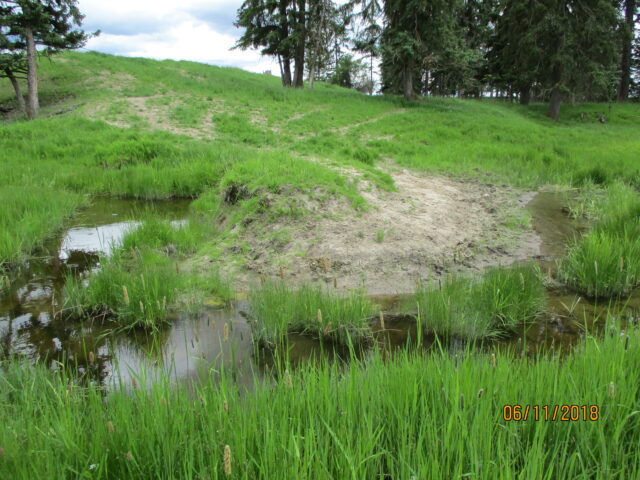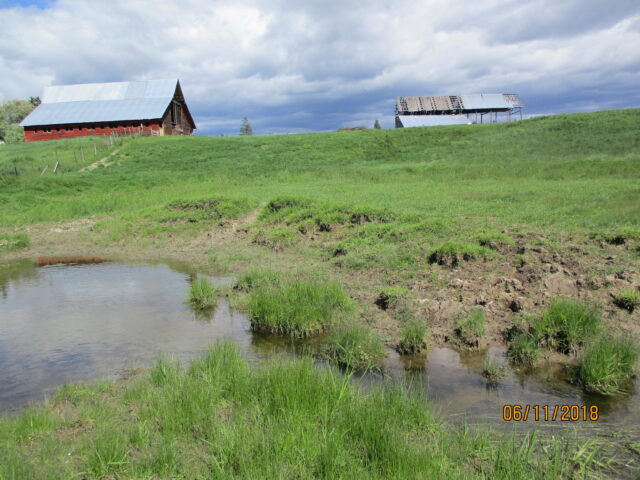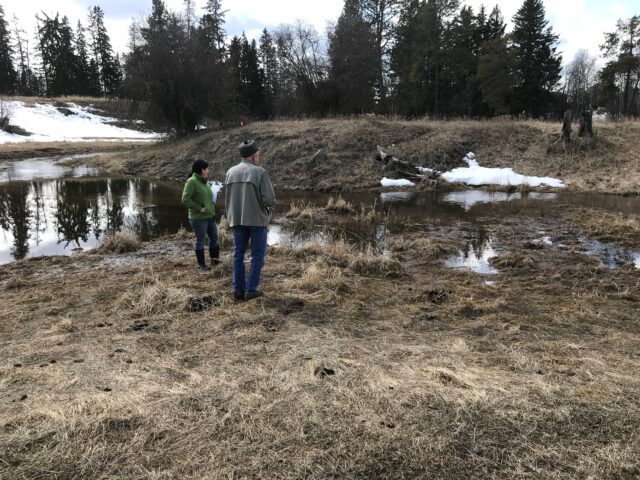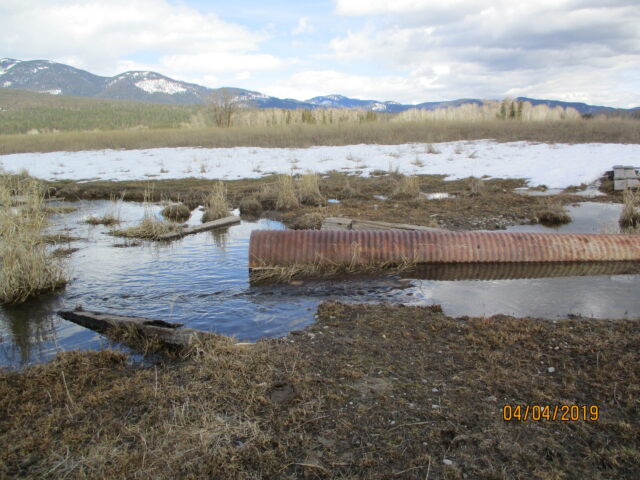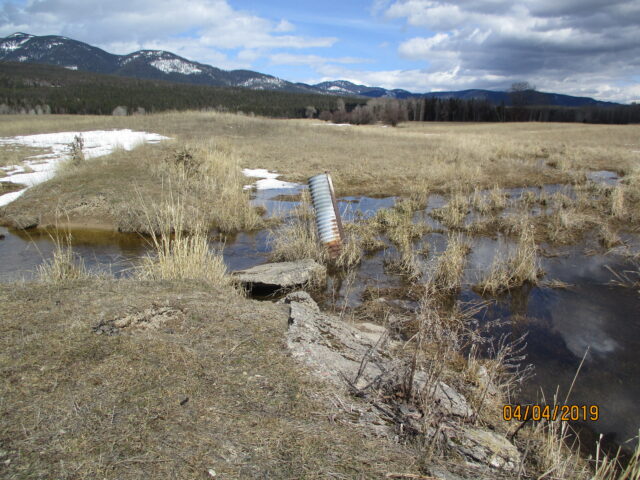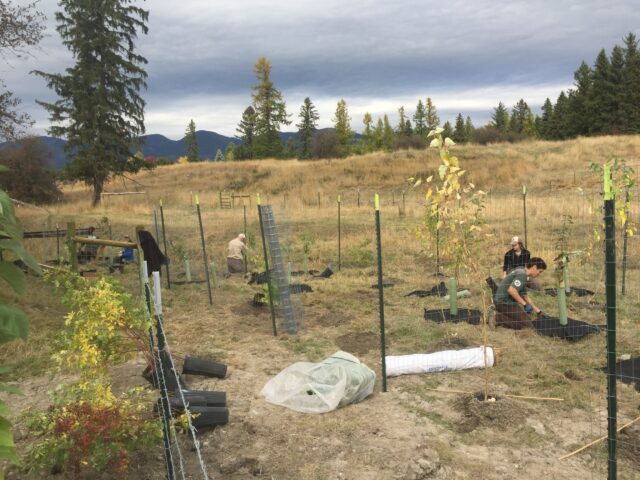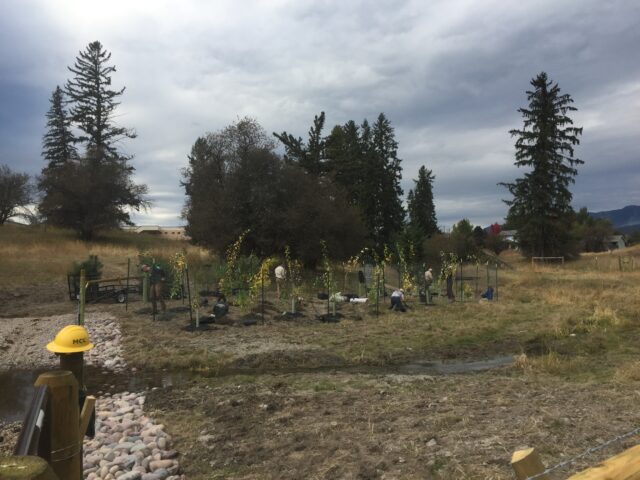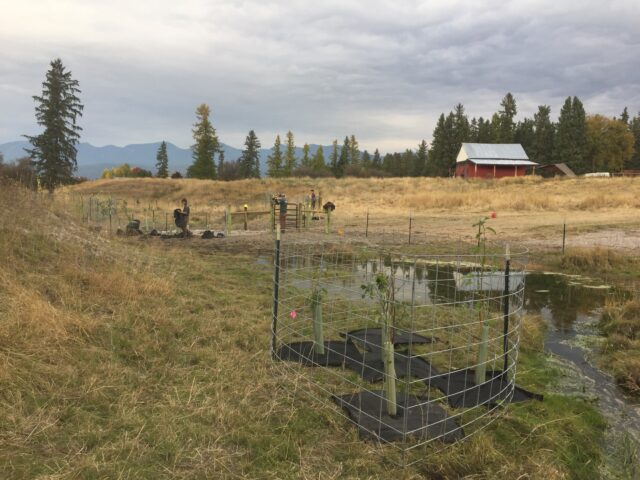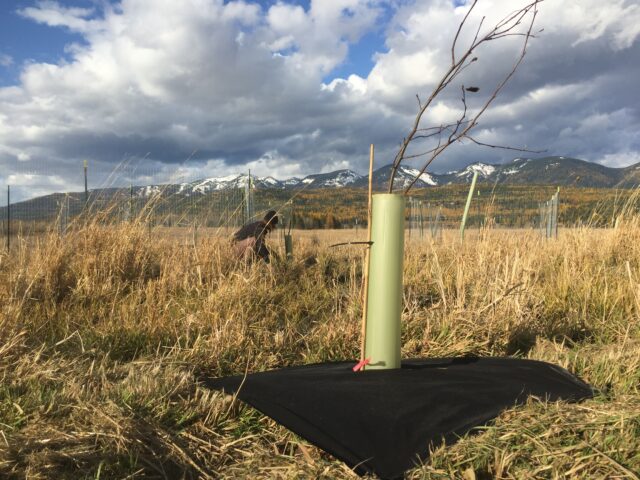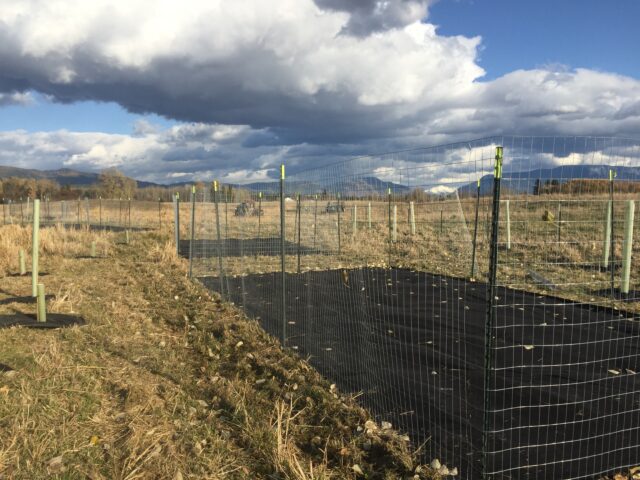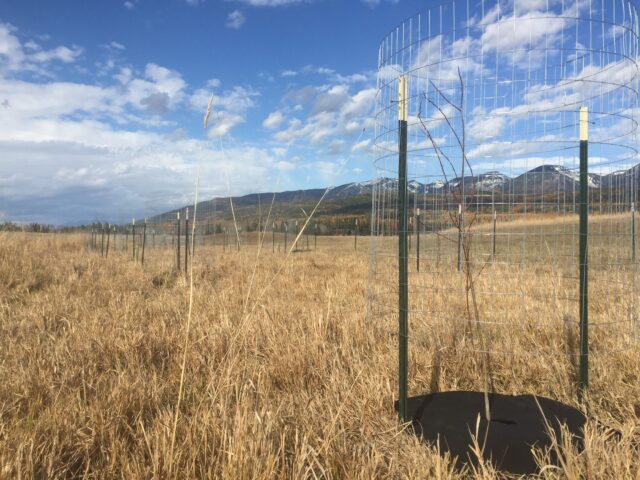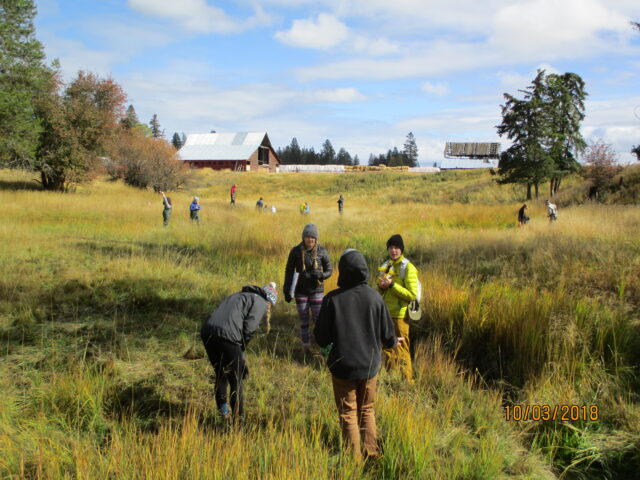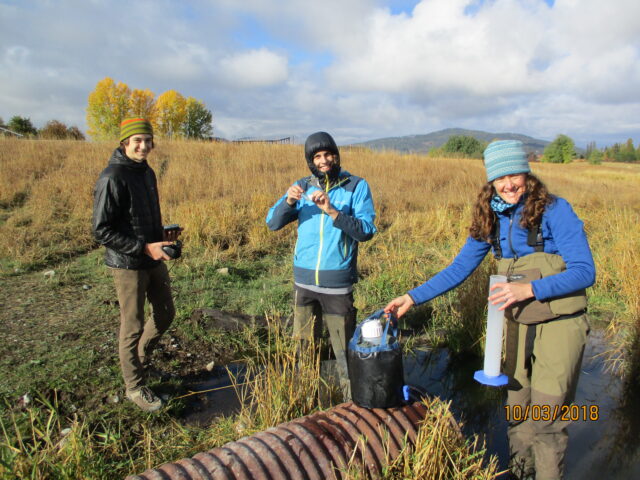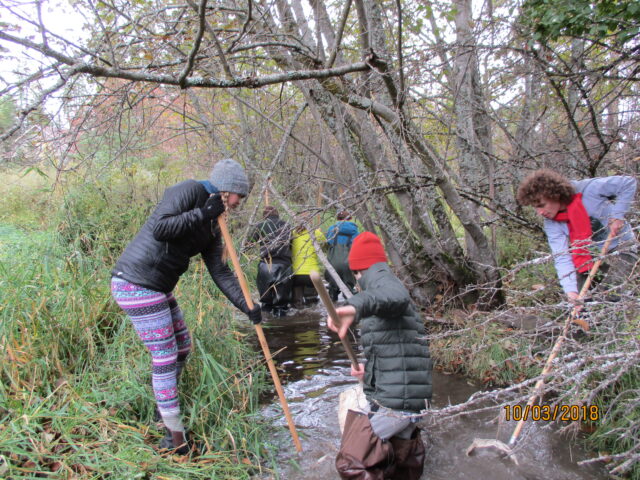Cow Creek is a small, yet important, stream that flows east of Whitefish and enters the Whitefish River just south of downtown. Historic and current land use practices along Cow Creek have lead to bank instability and erosion, channel widening and entrenchment, disconnection from the floodplain, upland soil compaction, and alteration stream-side vegetation. These issues have lead to excessive sedimentation, nutrient loading, and high in-stream temperatures which can further impair downstream waterbodies including Whitefish River, Flathead River, and Flathead Lake.
The overall goal of the Cow Creek Restoration Project is to improve water quality and ecological integrity in Cow Creek. As a tributary of the Whitefish River, this project will help to prevent future impairments downstream and restore hydrologic function and riparian vegetation.
To accomplish this objective, project partners have worked with two landowners to install hardened crossings and exclosure fences which will prevent damage from livestock grazing. Over 1,300 native plants are also being planted to restore the riparian area which will provide bank stabilization, reduce erosion, and help to reconnect the stream to the historic floodplain.
Prior to construction Cow Creek suffered from overgrazing, channel widening, loss of native vegetation, and excess nutrients. The pictures below demonstrate some of the damage and issues.
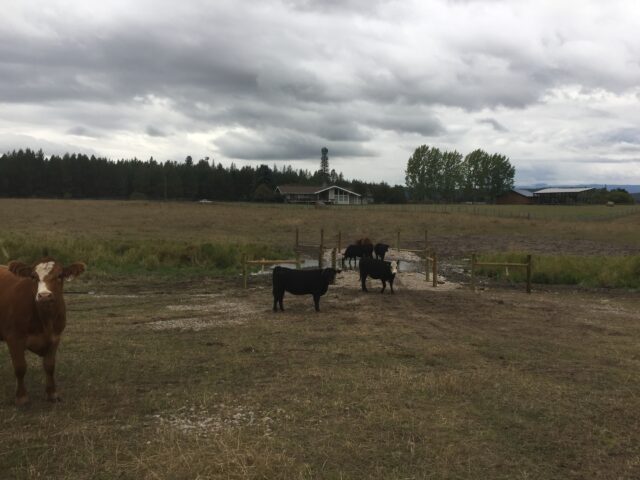
A hardened crossing and livestock exclosure fence were constructed at each site. The fencing will keep livestock out of the creek except at the hardened crossing where they can access the water for drinking and cross the creek without damaging it. Fencing the livestock out of the creek will prevent further damage to the vegetation and stream banks and keep excess nutrients from livestock manure farther away from the stream.
Once the fencing and hardened crossings were complete, project partners, MCC crews, and volunteers worked to restore the native vegetation. A variety of native, riparian species were planted including aspen, willow, cottonwood, alder, hawthorn, serviceberry, woods rose, and sedges. To ensure the best survival rate, temporary enclosures were built around all the plants, either individually or in groups, to keep the deer off. Weed matting was installed around each plant to reduce root competition from grasses and weeds. Many of the species were also protected from voles using tubes around the base of the plant.
To help monitor the effectiveness of the restoration project, we are also conducting water quality sampling and monitoring the vegetation with assistance from the FREEFLOW club students at Whitefish High School FREEFLOW.

